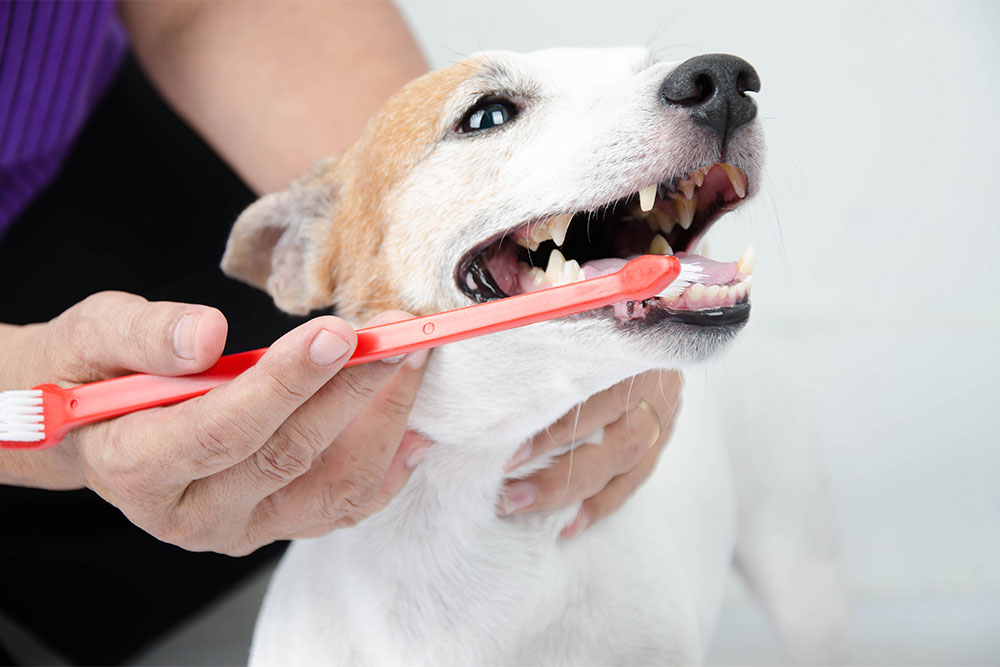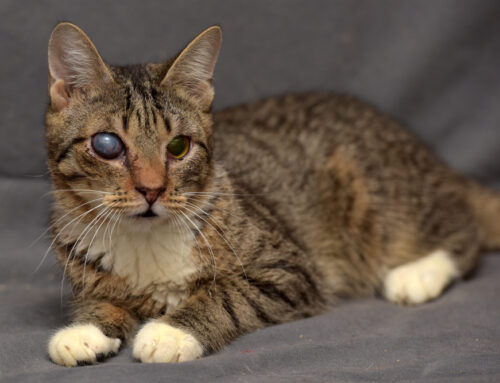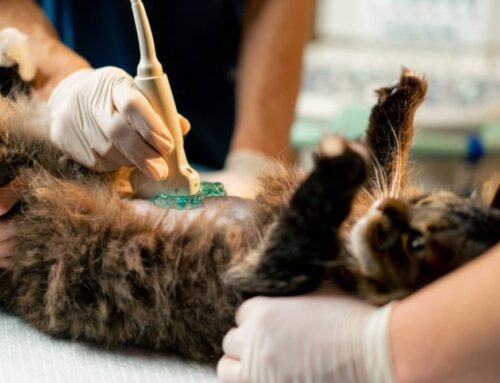Most pets with dental disease don’t show obvious signs—but that doesn’t mean they’re not in pain. At Santa Monica Veterinary Group, we often see dental issues that have been silently progressing for months or even years. Left untreated, they can lead to serious infections, tooth loss, and even systemic illness.
The good news? With regular checkups and preventive care, dental disease is manageable—and often completely preventable.
Understanding Dental Disease in Pets
Dental disease- most commonly periodontal disease– affects the tissues surrounding your pet’s teeth. It typically begins as gingivitis, a reversible inflammation of the gums, and can progress to periodontitis, where bone and tissue damage becomes permanent.
This condition starts silently, with plaque building on the teeth. Over time, plaque hardens into tartar, allowing harmful bacteria to thrive and triggering a cascade of inflammation, infection, and tissue breakdown.
Causes of Dental Disease: What Puts Pets at Risk
Multiple factors can increase your pet’s susceptibility to dental problems:
- Bacterial accumulation: Plaque and tartar provide ideal conditions for bacterial overgrowth.
- Diet: Soft or moist foods tend to promote more plaque buildup than kibble.
- Breed predispositions: Small and brachycephalic breeds (like French Bulldogs and Shih Tzus) are at higher risk due to crowded teeth. For additional guidance on small-breed dental care, see: Guide to Dental Disease in Small Breed Dogs – Royal Canin.
- Age: The longer plaque builds up, the more damage it can cause- making older pets more vulnerable.
- Poor oral hygiene: Without regular brushing or dental checkups, plaque and tartar accumulate rapidly.
Why Dental Health Matters
Dental disease can compromise more than just your pet’s smile. Oral health plays a crucial role in their comfort and systemic wellbeing:
- Pain and eating difficulty: Infected gums and loose teeth make chewing painful.
- Behavioral changes: Irritability, reclusiveness, or reduced play can signal discomfort.
- Serious complications: Bacteria from the mouth can enter the bloodstream and affect the heart, kidneys, and liver.
Learn more from Healthy Mouth, Healthy Pet: Why Dental Care Matters.
Recognizing the Signs of Dental Disease
Because pets often mask discomfort, early symptoms can be subtle. Watch for:
- Bad breath
- Red or bleeding gums
- Visible tartar buildup
- Drooling or pawing at the mouth
- Reluctance to chew or favoring one side
- Facial swelling or nasal discharge
- Weight loss or reduced appetite
Changes in behavior or activity level may also indicate underlying pain.
The Stages of Dental Disease
Dental disease progresses gradually- often without obvious symptoms until it’s advanced:
- Gingivitis – Gum inflammation; reversible with care.
- Early Periodontitis – Mild tissue damage and attachment loss.
- Moderate Periodontitis – Bone loss and deeper pockets around teeth.
- Advanced Periodontitis – Severe bone destruction, tooth loss, and risk of systemic illness.
Get an in-depth overview at Pet Dental Care – AVMA.
Diagnosing Dental Disease
A comprehensive dental exam at Santa Monica Veterinary Group may include:
- Visual inspection of the gums, teeth, and oral tissues.
- Dental probing to assess gum pockets.
- Digital X-rays to detect bone loss and hidden disease (Why X-rays matter).
- Bloodwork to ensure your pet is healthy enough for anesthesia.
These diagnostics help us understand the full scope of your pet’s dental condition.
Treatment Options: From Cleaning to Surgical Intervention
Depending on disease severity, we may recommend:
- Professional cleaning under anesthesia to remove tartar and polish teeth. Learn more at Anesthesia and Dental Cleaning for Pets – AAHA.
- Tooth extractions if teeth are loose, fractured, or infected.
- Periodontal therapy for deeper infections.
- Medications to control pain and bacterial infection.
- Home dental care using VOHC-approved products such as chews, rinses, and toothpastes.
Consequences of Delaying Dental Care
When dental disease is ignored, pets can suffer in silence. Long-term impacts include:
- Chronic oral pain
- Tooth loss, leading to poor nutrition
- Systemic infections affecting organs
- Risk of oral tumors, particularly when inflammation persists (Oral Tumors of Small Animals)
How Dental Disease Affects Daily Life
The consequences of untreated oral disease go beyond the exam room:
- Pets may avoid play, become less social, or exhibit aggression.
- Eating may become inconsistent or painful, causing weight loss.
- Owners may face emotional and financial strain due to unexpected treatments.
Dental disease quietly impacts your pet’s behavior, comfort, and long-term health.
Prevention: Your Best Strategy
A proactive approach is the best defense:
- Brush regularly using pet-safe products. Brush teeth using small circular motions with a pet-specific toothbrush.
- Introduce dental routines early, especially in puppies and kittens. Use dental wipes or rinses if brushing is challenging.
- Feed a balanced, dental-friendly diet. ffer safe chew toys to reduce plaque naturally- but avoid overly hard objects that can break teeth.
- Schedule routine dental exams for early detection and treatment.

FAQs
Is anesthesia safe?
Yes. Modern anesthetic protocols are safe, and we perform pre-anesthetic bloodwork to assess risk.
Can dental disease harm internal organs?
Absolutely. Oral bacteria can enter the bloodstream and affect the heart, kidneys, and liver.
How often should my pet have a dental cleaning?
Most pets benefit from annual cleanings, but frequency may vary based on age, breed, and individual needs.
We’re Here to Help
At Santa Monica Veterinary Group, we believe that every pet deserves a healthy, pain-free mouth. If your pet is due for a dental checkup– or if you’re seeing signs of oral discomfort- don’t wait.
Contact us today. We’re here to partner with you in ensuring your pet’s dental health supports their best life.







Leave A Comment